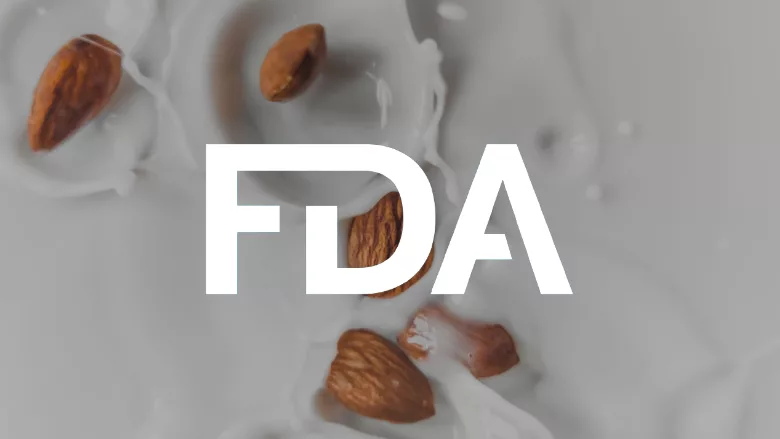FDA Draft Guidance for Naming, Labeling of Plant-Based Milk Alternatives

Credit: Austin Wilcox via Unsplash
The U.S. Food and Drug Administration (FDA) has announced draft recommendations for industry on the naming of plant-based foods that are marketed and sold as alternatives to milk. The draft guidance also recommends voluntary nutrient statements for the labeling of some plant-based milk alternatives.
The draft guidance was developed to help address the significant increase in plant-based milk alternative products that have become available in the marketplace over the past decade. The recommendations are intended to provide consumers with clear labeling.
In addition to the increase in market availability and consumption, the variety of alternative products available in the marketplace has also greatly expanded from soy, rice, and almond to include cashew, coconut, flaxseed, hazelnut, hemp seed, macadamia nut, oat, pea, peanut, pecan, quinoa, and walnut-based beverages. Although these products are made from liquid-based extracts of plant materials, such as tree nuts, legumes, seeds or grains, they are frequently labeled with names that include the term “milk.”
The draft guidance, titled, Labeling of Plant-based Milk Alternatives and Voluntary Nutrient Statements: Guidance for Industry, recommends that a plant-based milk alternative product that includes the term “milk” in its name (e.g., “soy milk” or “almond milk”), and that has a nutrient composition that is different than milk, include a voluntary nutrient statement that conveys how the product compares with milk based on the U.S. Department of Agriculture’s (USDA’s) Food and Nutrition Service fluid milk substitutes nutrient criteria. For example, the label could say, “Contains lower amounts of Vitamin D and calcium than milk.”
In September 2018, FDA requested information on the labeling of plant-based milk alternatives (PBMA) with terms that include the names of dairy foods such as “milk.” More than 13,000 comments were received, and the FDA determined that consumers generally understand that PBMA do not contain milk and choose to purchase PBMA because they are not milk. However, many consumers may not be aware of the nutritional differences between milk and PBMA products. For example, almond- or oat-based PBMA products may contain calcium and be consumed as a source of calcium, but their overall nutritional content is not similar to milk and fortified soy beverages, and they are not included as part of the dairy group in the dietary guidelines for 2020-2025.
The dietary guidelines only include fortified soy beverages in the dairy group because their nutrient composition is similar to that of milk. However, the nutritional composition of PBMA products varies widely within and across types, and many PBMAs do not contain the same levels of key nutrients as milk.
To support consistency across federal nutrition policies, the draft guidance recommends that industry use the USDA’s Food and Nutrition Service fluid milk substitutes nutrient criteria to determine if a PBMA is nutritionally similar to milk. Additionally, FDA is in the process of developing a draft guidance to address the labeling and naming of other plant-based alternative products.
FDA is accepting comments on the draft guidance. Comments on the draft guidance should be submitted within 60 days after publication in the Federal Register. Electronic comments can be submitted to Regulations.gov. All written comments should be identified with the docket number FDA-2023-D-0451 and the title of the guidance document.Update, April 20, 2023: FDA will reopen the comment period for the draft guidance. The new deadline for comments will be determined when the reopening notice publishes. FDA is reopening the comment period in response to requests from stakeholders to allow additional time for interested parties to develop and submit comments.
Looking for quick answers on food safety topics?
Try Ask FSM, our new smart AI search tool.
Ask FSM →







